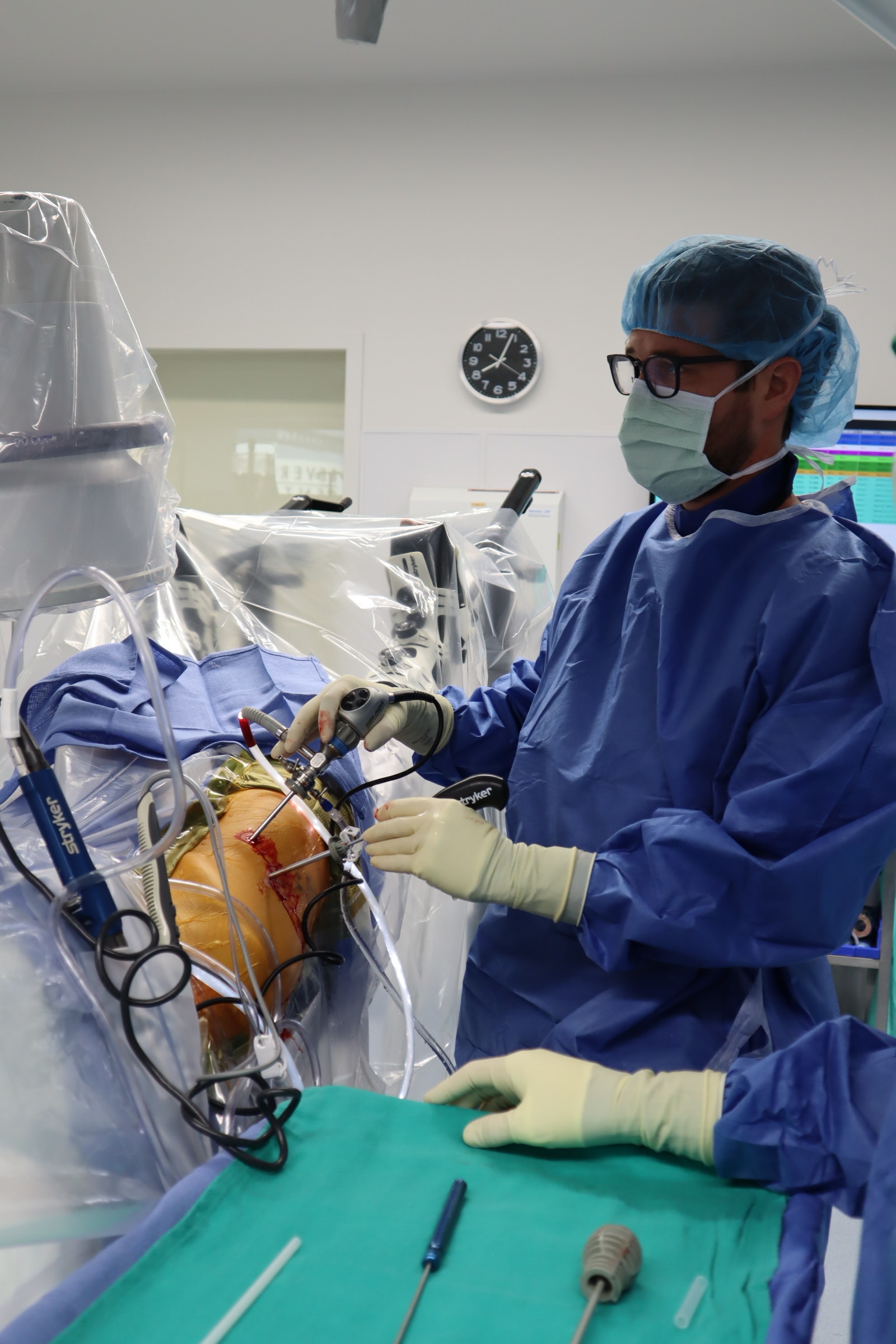Hi! I'm Shelby, and I had major hip surgery at 27 years old.
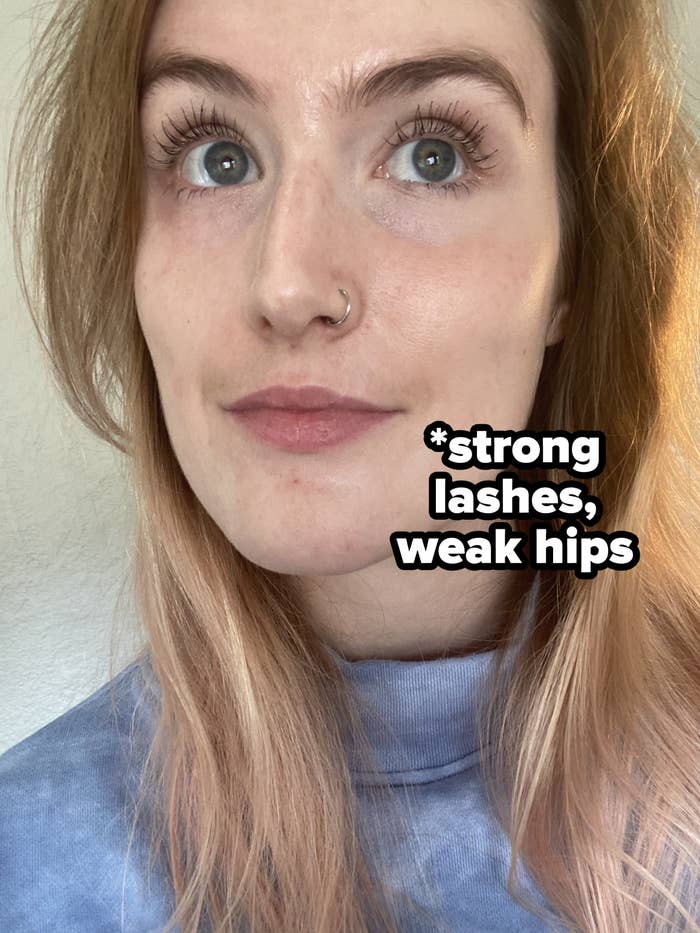
What brought me here, you might be wondering? Well, to take it all the way back to the beginning, I've been experiencing pain and tightness in my hips as early as my teenage years. As in, whenever I'd bring my knees to my chest pre-surgery, my hip sockets would feel SUPER tight and painful, as if they needed immediate relief.
So something I started doing to give my hips "relief" was bringing my knees to my chest and moving them side to side in order to make my hips crack. I thought the cracking released the tightness and was helping my hips (spoiler alert: It wasn't and I should've never been doing this in the first place).
One night in bed last summer, I was doing my good ol' hip cracking when I felt a really sharp pain in my right hip. I immediately stopped and figured it was just a fluke, but in the weeks following, my groin area on my right side was SUPER tender and stiff. Even walking up and down stairs became a challenge.
I assumed my pain was just due to a really bad groin strain, so I eased back on my workouts and waited for it to pass. But about two months down the road, I realized things weren't getting better. Although my groin and hip weren't consistently hurting on a regular basis like they were at the beginning of my injury, I still felt deep, lasting pain anytime I tried to walk more than half a mile or do something as simple as a lunge or squat. Needless to say, I needed some help.
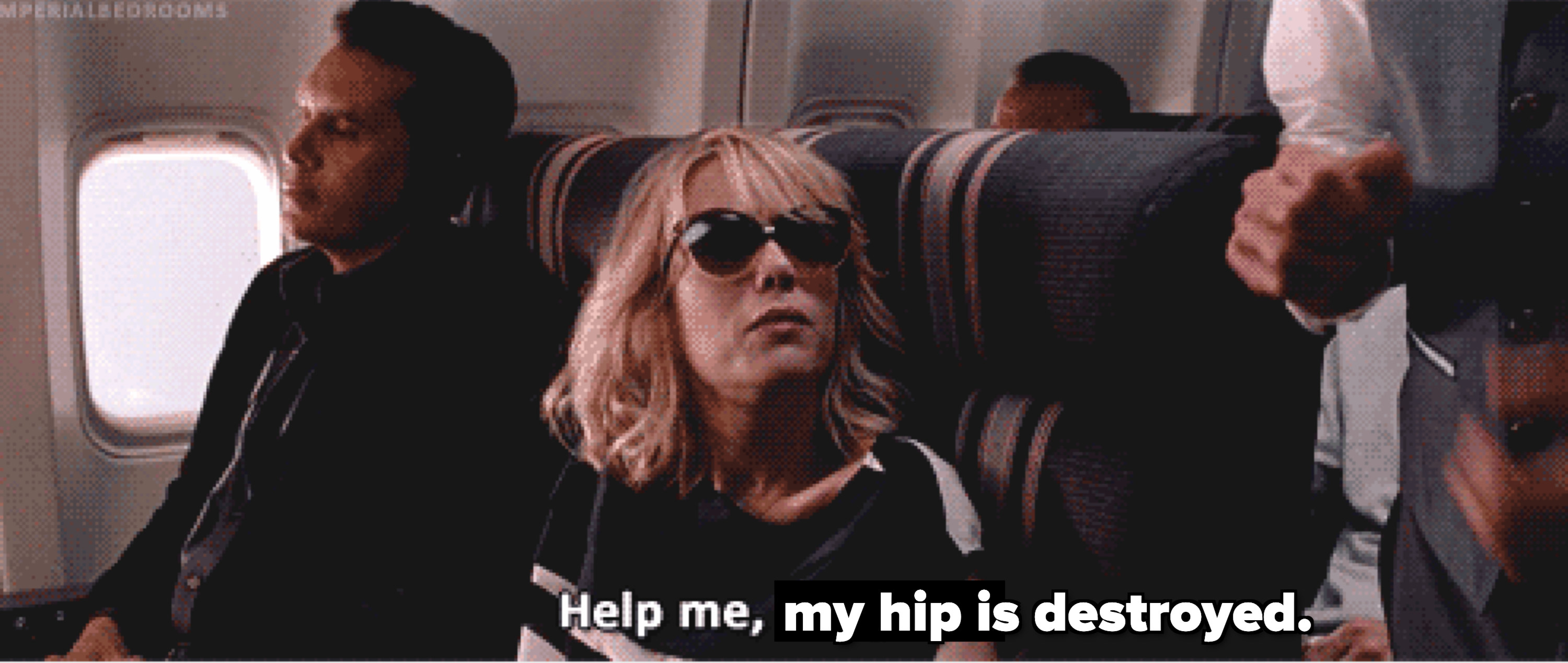
I'm fortunate enough to have employer-sponsored health insurance through Empire Blue Cross Blue Shield, so I consulted Dr. Joseph Cooper, MD, an orthopedic surgeon at Docs Spine + Orthopedics here in Los Angeles. After X-rays, two months of physical therapy that didn't improve my symptoms, and an MRI, Dr. Cooper concluded that I'd torn my labrum in my right hip.
According to Dr. Cooper, "The hip is a ball-and-socket joint and the labrum is essentially a ring of tissue that surrounds the socket part of the joint to help hold the ball in a good position and allow it to move smoothly as the hip moves. Labral tears can happen when you fall or have an injury, but they can also happen when your hips are shaped a little differently than normal, with more bone than usual on some parts of the hip. The extra bone causes two parts of the hip — the socket part and a part just behind the ball called the neck of the hip — to bump into each other when you bend the hip deeply. This is called hip impingement and repetitive hip impingement can lead to labral tears."
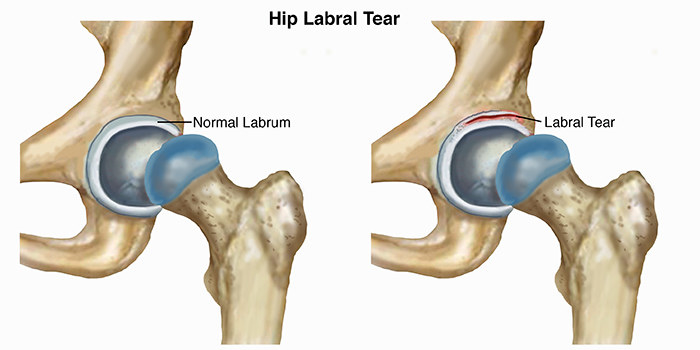
This difference in hip shape is called a CAM deformity, which Dr. Cooper confirmed I have in both of my hips. My right labrum likely tore due to repetitive stress, impingement, and/or "micro-injuries" (aka cracking my hips, among other things).

Dr. Cooper also explained that labral tears from micro-injuries are "more common in certain sports that require a lot of hip flexion. ... That being said, it happens commonly in people who do not currently or never have played a lot of sports. The theory of why it happens is the same: repetitive injury or aggravation, but the cause can be hard to pin down."
Note: I'm not an athlete in ANY sense of the word so I guess I'm just special.
In order to repair my labrum, I'd have to undergo arthoscopic hip surgery. I learned that although the procedure itself is pretty simple, the recovery is intense. Immediately following surgery, I'd be on crutches and in a hip brace, and wouldn't be able to put weight on my right leg for a full two weeks. The hip brace would need to stay on for 4–6 weeks, and I wouldn't be allowed to drive until 6 weeks post-op. In addition to that, I'd need to undergo at least 3–6 months of physical therapy to get my hip back to the way it was before the labral tear.
So, obviously, there were MANY factors to consider, especially that I'd essentially be immobile in the beginning of my recovery. Ultimately, I decided to go through with the surgery right away because I was still working from home due to the COVID-19 pandemic and my partner was kind enough to let me stay with him while I recovered. Had this not been the case, my decision would have probably been very different.
Another major factor to consider was cost. With my insurance, the final cost of the surgery — including the procedure itself, facility costs, anesthesia, implants, the crutches and hip brace, medications, etc. — was just under $1,900. Without insurance, it would have cost thousands more. So when I say I'm fortunate, I really mean it.
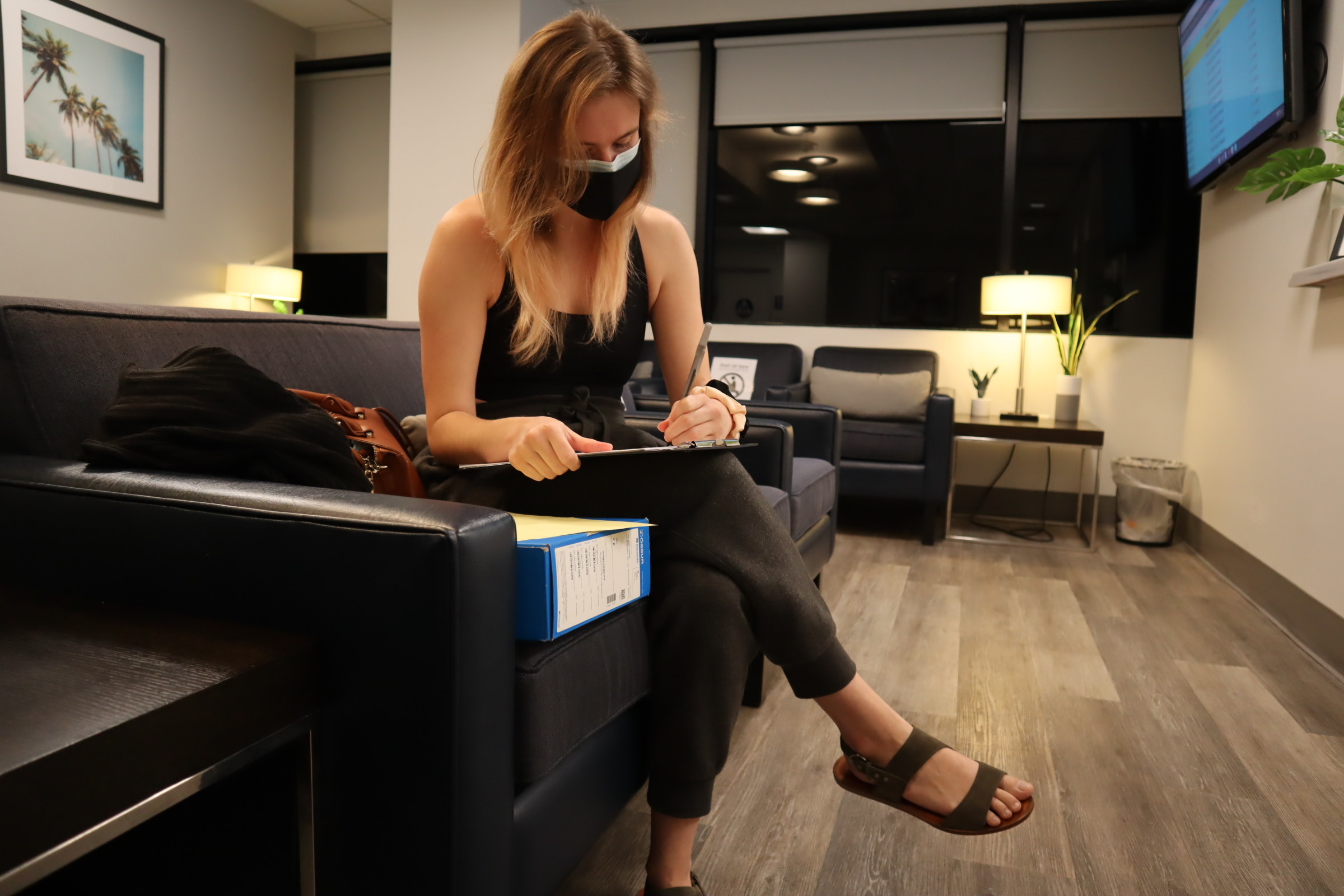
On the day of surgery, Dr. Cooper explained that he and his crew would use a small camera to evaluate my hip, then use specialized instruments to sew my labrum back to the bone using devices called "anchors." Here's me listening and feeling very, very nervous:
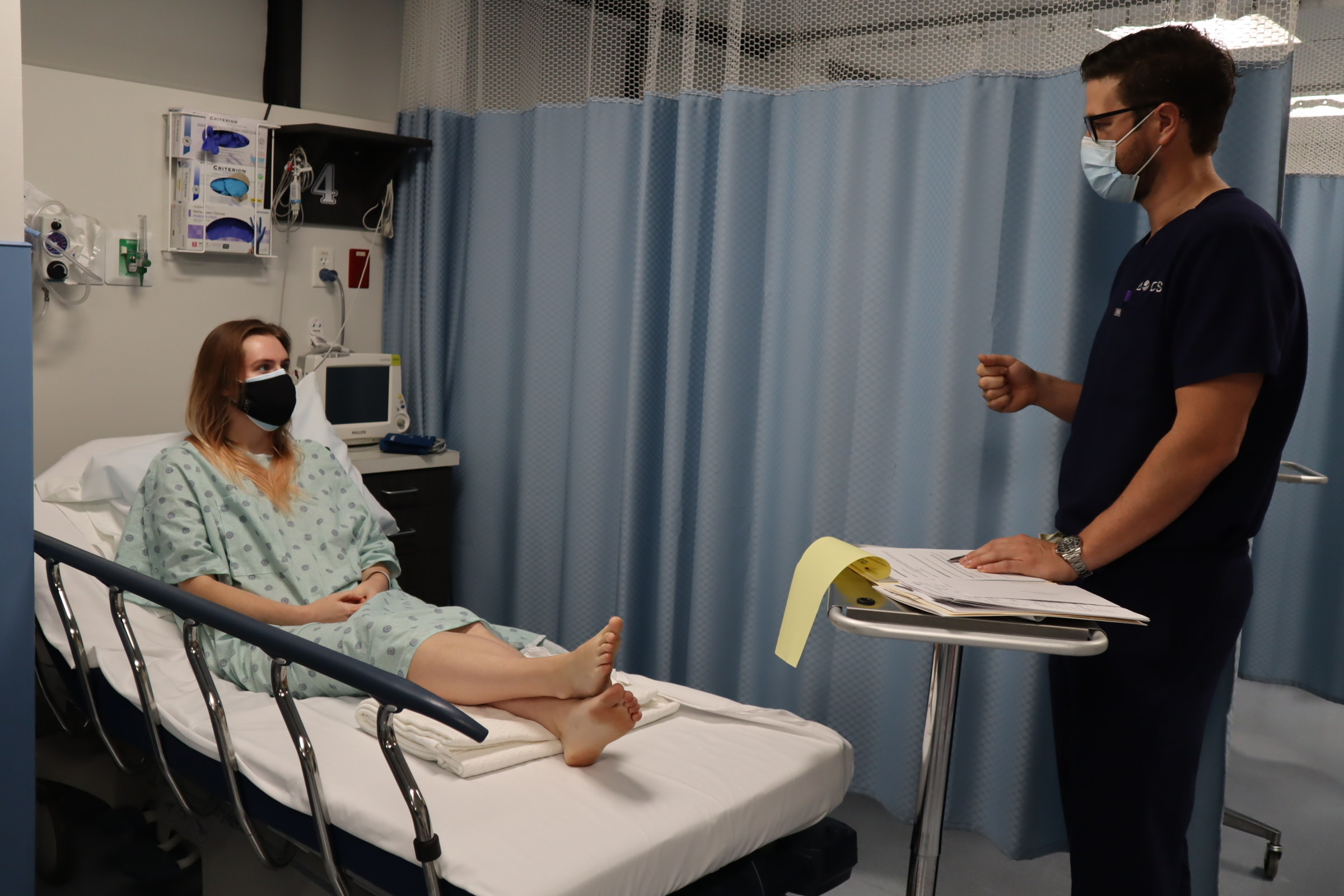
When it was all over, I woke up feeling like no time had passed with my hip brace on and my right leg completely numb. I hobbled out of the surgery center on crutches, my boyfriend drove me home, and I got situated in bed. During the first 24 hours post-op, I was very dependent on my boyfriend for help. I couldn't even sit down on the toilet on my own! So I'd definitely recommend having someone around for support immediately after surgery, even if it's just for a day or two. I don't think I would have been able to do it on my own.
In the two weeks following surgery, I was under strict orders to wear my hip brace at all times aside from showering and changing clothes — this meant wearing the brace even when I slept. I also had to completely avoid putting any weight on my right foot. I could occasionally put my toe down for balance but that was pretty much it! This meant getting around on crutches. Here's a look at what I was working with:
The hip brace and crutches were super limiting in that a) even moving through the house became a challenge and b) I couldn't carry anything because I had to use both hands for the crutches. Eventually, I got creative and started wearing a backpack and using a tote bag to carry around the things I needed when no one else was home. Hey, it worked in a pinch!
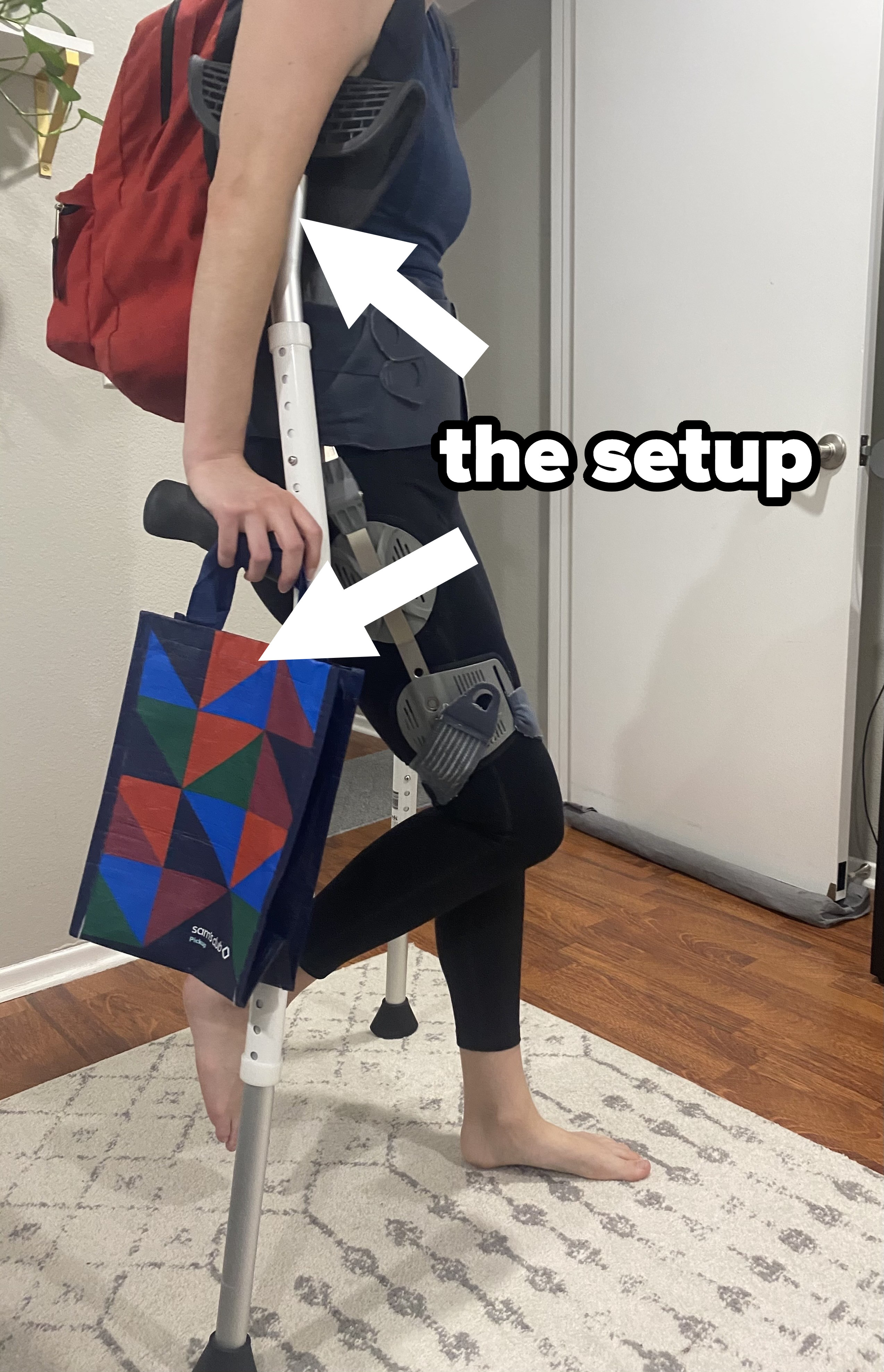
During this time, I also started physical therapy to help strengthen the area around my hip and assist the healing. The exercises, both at the PT office and at home, started off pretty basic. Most of them involved simply flexing and relaxing my thighs and glutes.


